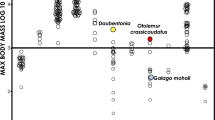Summary
Alarm calling in a population of thirteenlined ground squirrels, Spermophilus tridecemlineatus, was studied over a three-year period. Data on ground squirrel reactions to human and canine approaches and to the approach or presence of avian predators were used to quantify alarm calling behavior.
The results support the hypothesis that alarm calling in this species functions to warn genetic relatives. Human and canine approach-elicited calls were most frequently given by mothers and their recently emerged young; adult males and nonparous females rarely called. The onset of maternal calling coincided with the aboveground appearance of a mother's own litter, and both juvenile and maternal calling were terminated at approximately three weeks post-emergence. Alarm calls were rarely emitted during encounters with avian predators.
Alarm calling behavior in S. tridecemlineatus thus appeared to be dependent upon the presence of newly emerged juvenile relatives. To investigate whether the population structure of S. tridecemlineatus was perhaps incompatible with the evolution of alarm calling directed toward adult relatives, the distance between the home ranges of adult relatives and the distance over which the alarm vocalization is audible to ground squirrels were measured. The results revealed that females were likely to have adult relatives relatives residing within audible range of the call.
Similar content being viewed by others
References
Alexander R (1974) The evolution of social behavior. Annu Rev Ecol Syst 5:325–383
Bailey V (1893) The prairie ground squirrels or spermophiles of the Mississippi Valley. US Dep Agric Div Ornithol Mammal Bull 4:1–67
Balph D, Balph D (1966) Sound communication of Uinta ground squirrels. J Mammal 47:440–450
Brown J (1974) Alternate routes to sociality in jays — with a theory for the evolution of altruism and communal breeding. Am Zool 14:63–80
Charnov E, Krebs J (1975) The evolution of alarm calls. Am Nat 109:107–112
Dawkins R (1976) The selfish gene. Oxford University Press, New York
Dunford C (1977) Kin selection for ground squirrel alarm calls. Am Nat 111:782–785
Fitch H (1948) Ecology of the California ground squirrel on grazing lands. Am Midl Nat 39:513–596
Hamilton W (1963) The evolution of altruistic behavior. Am Nat 97:354–356
Hamilton W (1964) The genetical evolution of social behavior, I, II. J Theor Biol 7:1–52
Hamilton W (1972) Altruism and related phenomena, mainly in social insects. Annu Rev Ecol Syst 3:193–232
Hamilton W (1975) Innate social aptitudes of man: an approach from evolutionary genetics. In: Fox R (ed) Biosocial anthropology. Halsted Press, New York
Harris J (1967) Voice and associated behavior in Citellus tridecemlineatus and other ground squirrels. PhD thesis, University of Michigan
McCarley H (1966) Annual cycle, population dynamics and adaptive behavior of Citellus tridecemlineatus. J Mammal 47:294–316
Matocha K (1977) The vocal repertoire of Spermophilus tridecemlineatus. Am Midl Nat 98:482–487
Maynard Smith J (1965) The evolution of alarm calls. Am Nat 99:59–63
Melchior H (1971) Characteristics of arctic ground squirrel alarm calls. Oecologia (Berlin) 7:184–190
Perrins C (1968) The purpose of the high-intensity alarm call in small passerines. Ibis 110:200–201
Schwagmeyer P (1979) The function of alarm calling behavior in Spermophilus tridecemlineatus, the thirteen-lined ground squirrel. PhD thesis, University of Michigan
Sherman P (1976) Natural selection among some group-living organisms. PhD thesis, University of Michigan
Sherman P (1977) Nepotism and the evolution of alarm calls. Science 197:1246–1253
Trivers R (1971) The evolution of reciprocal altruism. Q Rev Biol 46:35–57
Turner L (1973) Vocal and escape responses of Spermophilus beldingi to predators. J Mammal 54:990–993
Wilbur H, Tinkle D, Collins J (1974) Environmental certainty, trophic level, and resource availability in life history evolution. Am Nat 108:805–817
Williams G (1966) Adaptation and natural selection. Princeton University Press, Princeton
Author information
Authors and Affiliations
Rights and permissions
About this article
Cite this article
Schwagmeyer, P.L. Alarm calling behavior of the thirteen-lined ground squirrel, Spermophilus tridecemlineatus . Behav Ecol Sociobiol 7, 195–200 (1980). https://doi.org/10.1007/BF00299364
Received:
Accepted:
Issue Date:
DOI: https://doi.org/10.1007/BF00299364




